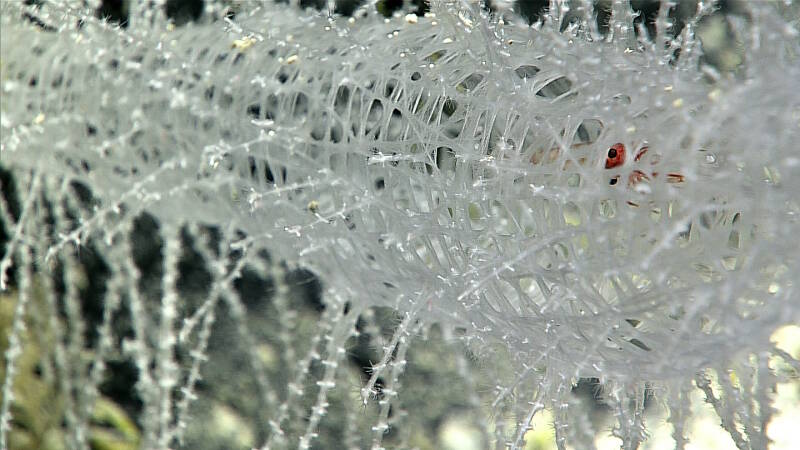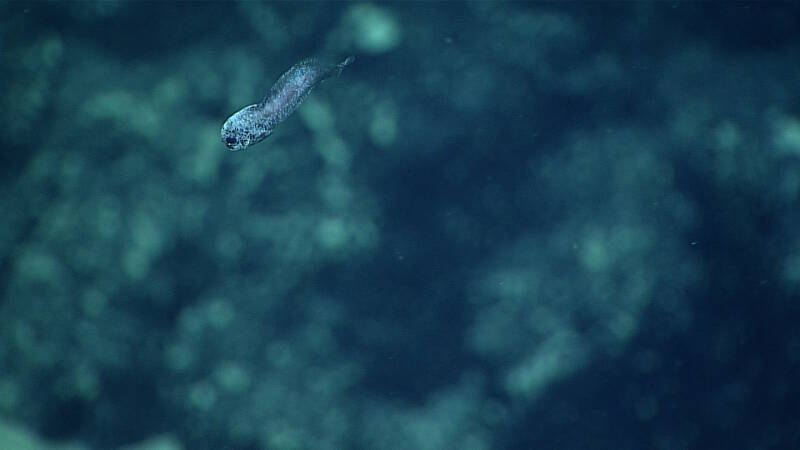This was the deepest of the expedition so far, starting at 2,420 meters depth on a sedimented slope with several exposed rock features. Transiting upslope, the pilot noted a relatively high current. A few different fish species were observed along the slope, including spiny eels, cusk eels, rattails, and an unknown snailfish representing a new record for this region. Similar to the shallow dive at Baker Island, several of the fish had isopod ectoparasites. Other animals found on the sediment surface and rock debris included xenophyophores, sea cucumbers, brachiopods, sponges, stalked crinoids, a sea spider, sea stars, and scale worms. At 2,366 meters, the remotely operated vehicle encountered a steep wall composed of intact and collapsed pillow lava with a few fish including rattails and cusk eels. A carnivorous sponge and a branched sponge, both with multiple associates (polychaetes, ctenophores, brittle stars, hydroids, marine molluscs, amphipods, and crinoids) were collected. Scattered corals occurred on the steep face, including cup corals, black corals, a single stalk bamboo colony, and octocorals, as well as an unusual planar octocoral (with marine mollusc associates). Scientists observed sea stars and tried to collect an unknown one at 2,332 meters, which is deeper than any previous record; unfortunately, we were unable to collect it. At the peak of the steep slope, the terrain transitioned to flatter features with local topographic highs, including large boulders. This area represented a plateau before the start of the main ridgeline. The boulders and exposed rocks were populated with the largest and most diverse corals seen on the entire dive. Scientists imaged different species of octocorals, branched internodal and nodal bamboo corals, hydroid, and ~1.5-meter wide chrysogorgids. Each of the large colonies had at least one associate, including brittle stars, squat lobsters, zooanthids, and crinoids. The dive upslope tomorrow will be an interesting opportunity to see if these multiple fan colonies continue up along the ridgeline.

